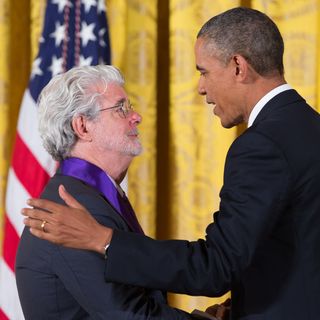Keypoints:
- Disney now holds a large amount of new intellectual property (IP), as well as an extensive backlog of Fox content.
- Disney and Fox were already two of the major players in the “Big Six” companies (now Big Five) that are responsible for over 90 per cent of media output.
- Disney’s $71.3B acquisition of Fox assets has been theorised to be part of a longer-term strategic play to compete on the streaming market.
- The merger will force Disney to re-evaluate its ‘brand’.
On 20 March 2019, The Walt Disney Company (Disney) merged with Twentieth Century Fox (Fox), receiving almost all of its assets for US$71.3B marking one of the most significant developments in global media of the last 50 years.
While this represents only the fourth-largest media merger of all time, commentators have already made note that the involvement of the influential Murdoch family – who previously controlled Twentieth Century Fox - in the process will reshape the direction and fortune of one of the media industry’s foremost dynasties and drastically shake-up the upcoming ‘streaming apocalypse’.
This merger has also condensed the ‘Big 6’ (the group of companies that control 90 per cent of American media) into the ‘Big 5’. This has raised competition concerns similar to those that were raised in the early 2000s when the music industry witnessed the consolidation of major conglomerates which in turn led to a perception of decreased market competition, the production of an inferior creative product across the industry and increased exploitation of workers.
What does this mean for audiences? Although many have enthusiastically touted the potential for cross-over of content, it also means there will be an increased level of exclusivity. In order to continue to watch all their favourite shows, audiences will have to be willing to pay for an ever-increasing number of monthly subscriptions for multiple platforms at once.
Disney launches Disney+ in late 2019, which some commentators have suggest is part of a broader move to brace themselves against the increasing competitive threat of Netflix. Disney has already committed serious resources to the service, announcing the much-anticipated stand-alone Star Wars series The Mandalorian as exclusive to the platform shortly after dropping the Star Wars Episode IX: The Rise of Skywalker trailer.
Media consolidation also effects the average reader’s consumption of news, and potential conflicts of interest in reporting – a number of the articles sourced for this explainer include disclaimers about the company having investments, ownerships or partnerships with the companies they are commenting on.
Fox and the Murdochs
As part of the merger, Disney acquired a suite of Fox’s film and television enterprises, as well as a 30 per cent stake in the streaming platform Hulu. The US Justice Department approved the merger on the condition that Disney’s sports subsidiary ESPN had to sell 22 regional sports networks to avoid "undue dominance in sports broadcasting".
The previous shareholders of the Fox empire (which primarily sits with the Murdoch family) have the option to redeem the purchase in a combination of Disney shares and/or cash. The former of the two seems more likely when considering that US-taxation law would not tax the shares, but would significantly tax the cash option. At the time of purchase, a Disney stock-only redemption by Murdoch would make the family’s patriarch, Rupert Murdoch, the second-largest shareholder in Disney. This would mean that as an individual, Murdoch would have almost equal influence to The Vanguard Group, an investment management fund with 16,000 employees that owns 7.77 per cent of Disney stock.
Superhero cross-over films have been a major focus of culture commentators, especially in the face of The Avengers: Endgame’s breaking of multiple box-office world records. Disney owns the IP for Marvel content, but now has access to Fox hits like Deadpool and X-Men.
Explainer: The US college admissions scandal

There are, however, broader implications for Disney, Fox and global audiences. Popular shows such as Modern Family, and The Orville now have uncertain futures, and the merger could spurn 4,000 lay-offs and redundancies for Fox and Disney staff, regardless of whether they moved into the larger Disney company, or stayed with the slimmed-down Fox Corp that combines Fox Broadcasting and Fox News.
As it has taken out a major player, this merger is relatively unprecedented, and has been said to signal further media consolidation down the line. There are already reactive moves that point to this with rival conglomerate AT&T purchasing Time Warner to acquire HBO’s intellectual property.
The effect in Australia goes beyond viewing habits – Disney now legally owns Fox Studios in Sydney (where parts of The Matrix and X-Men Origins: Wolverine were filmed), and upon the purchase received a $17.1m subsidy to shoot an unnamed Marvel movie at the newly-acquired location. It has been theorised that this geographic centralisation of foreign co-productions might drain revenue coming from international productions in Melbourne and the Gold Coast (where Aquaman was filmed).
The streaming apocalypse
Ironically, Disney’s release of a new trailer for The Mandalorian – an exclusive addition to Disney’s streaming service Disney+ and a Star Wars property – represents the beginning of a new war – the battlegrounds of which are in the Big 5’s respective streaming platforms.
Colloquially referred to as the “Streaming Apocalypse”, the merger has allowed Disney to gain a further 30 per cent of streaming service Hulu, giving it a controlling stake of 60 per cent, and access to Fox’s back-catalogue of movies. In what has been viewed as a defensive manoeuvre, Netflix has axed its full suite of Marvel shows, despite their success.
The ‘Big 5’ are locked into a loss-leading process that sinks money into in-house content production to secure an exclusive subscriber base and Disney will have to compete against the various models being offered. For example, Comcast has moved into free ad-supported streaming through its subsidiary NBCUniversal. AT&T has also announced plans to release a three-tiered streaming service through its subsidiary WarnerMedia that has advertising for some tiers.
In retaliation to Netflix’s shift towards in-house production, AT&T and Disney heads have indicated they intend to sever licensing deals with Netflix in future
Traditionally, Netflix has invested heavily in licensing content from its competitors. Recently, however, Netflix has been investing more in its own original content. Although it doesn’t make short-term business sense – exclusive content is what gives a streaming platform worth, and this requires huge amounts of investment. Netflix’s $152B platform is a serious challenger to the ‘Big 5’, and its 2013 Emmy win for their exclusive series House of Cards had commentators noting that Netflix had “arrived as a legitimate platform for not only old movies and TV shows, but compelling original content”.
In retaliation to Netflix’s shift towards in-house production, AT&T and Disney heads have indicated they intend to sever licensing deals with Netflix in future, with Disney recently severing its US$500M p.a. deal with Netflix. This creative protectionism translates to increasing fees for subscribers.
Although Disney+ is predicted to cost $7USD per month, the exclusivity of its content may mean that multiple subscriptions will become the norm if viewers want a diversity of content.
In Australia, Disney has recently signed a licensing deal with Netflix competitor Stan to stream Pixar and animated classics such as the Toy Story trilogy and Frozen. Netflix’s Oscar wins for Roma, as well as Amazon’s previous Oscar win for Manchester by the Sea, are now being cited as the catalyst forcing Disney and other ‘Big 5’ members to ramp investment (and lose hundreds of millions in licensing revenue) into Disney+ and other streaming platforms as Netflix becomes an increasingly threatening competitor.
Media consolidation
Although Netflix’s emergence originally promised a new age of content-creation, media consolidation has actually become more pronounced in the context of streaming and the Fox-Disney merger.
All of the Big 5 have a long history of mergers, acquisition and consolidation, as Comcast purchased Illumination in 2008 and DreamWorks Animation in 2016 to compete with Disney-owned Pixar studios. Comcast also acquired Murdoch-asset Sky News in the context of the Fox-Disney merger, and made a last-minute bid for Fox that drove Disney’s purchase price up to the US$71.3B mark.
In 1995, at the same Time Warner Inc. and Turner Broadcasting System merged (and were eventually absorbed into AT&T), Disney was acquiring the American ABC News Network. This deal eventually lead to AT&T acquiring Cartoon Network, which competes with Disney’s Disney XD and Viacom’s Nickelodeon, all of which competed with 21stCentury Fox’s Fox Kids, before Disney completed an acquisition of the property in 2001 for US$2.9B.
Consolidation also raises questions around ‘branding’ – family-oriented Disney also acquired an 18 per cent share in Vice Media as part of the Fox merger – a youth-oriented brand described by its founders as starting “from the depths of drug addiction” and courting controversy for its co-founder Gavin McInnes’ acrimonious split in 2008, and connection to far-right extremist groups. Indeed, most of the properties of the Big 5 also have extensive histories of acquiring their competitors.
Explainer: What happened to the presidential arts medals?

Although the US Justice Department decreed Disney needed to sell ESPN property so as to “not harm competition” the overall trajectory is moving increasingly toward a marketplace with decreased competition. Therefore, the paradox of a pro-drug media subsidiary housed within a family-friendly conglomerate may further prevent competition by ensuring as diverse a range of consumers as possible are conducting business with a single entity – whether they know it or not.
In the face of the recent release of the final season of Game of Thrones (recently under the new ownership of AT&T), the implications of feudalism in the streaming ‘warfare’ metaphor of the Big 5 feels far more apt. In this circumstance, the most likely casualties on the battlegrounds of the ‘Streaming Apocalypse’ will be consumers, as cooperative licensing deals are increasingly severed, and the Big 5 place moats and walls around their content to secure their own territory.
While the average consumer may be a neutral party at first, the increasing esotericism of the Big 5 may force us average consumers to swear allegiance to a single member of the Big 5 and stick with them, as the costs of passage between all five becomes too high.






